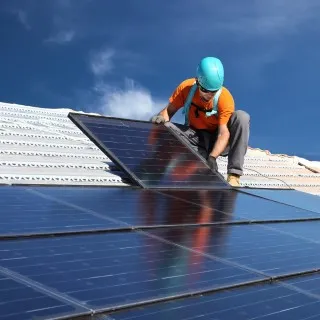
Why India's IPPs turn to solar park models for projects
Land availability is among the top factors behind this trend.
India’s Solar Programme has set-up an ambitious capacity addition target of ~100GW of solar capacity addition by 2022, according to CARE Ratings. Of this capacity, ~40GW is expected to get installed under solar rooftop segment and balance has come/is expected to come in the form of grid connected solar capacity (with ~3.4GW already installed at time of policy formation as on March 31, 2016).
Of the total ~60GW, ~40GW is expected be commissioned under various state policies and rest i.e. 20GW is expected to be added under Solar Park model.
The recent competitively bid tariffs based on reverse auction in the range of Rs.2.44-3.30/kWh signifies major improvement in cost competitiveness against both alternate renewables as well as conventional sources of power.
Here's more from CARE Ratings:
CARE Ratings believes that the ‘Solar Park’ model has emerged as the preferred model for Independent Power Producers (IPPs) with key embedded features like 1) desired economies of scale for capacity addition at a single location, 2) upfront land availability, 3) accommodative timelines of 18 months for commissioning of projects (v/s 13-15 months in National Solar Mission programme (NSM)/state policies), 4) Project PPA with features such as state government guarantee for the contracted capacity by state utility 5) “Deemed Generation” compensation mechanism in case of non-availability of grid and 6) evacuation infrastructure with shared power transmission costs and other project related infrastructure, which shall reduce overall cost for the developers.
Nonetheless, from credit perspective, the viability of these projects would be critically dependent upon 1) availability of elongated tenure of financing (~17-18 years) from CoD at competitive rates and 2) ability to contain both Photo Voltaic (PV) module and Balance of System (BoS) costs within the budgeted levels.
During FY15-FY17, solar tariff bids have reduced by ~46%1 with the recent lowest bid in the Bhadla Solar Park (250MW) of The country added 5.5GW of solar capacity (up 83% over FY16) and 5.4GW of wind capacity (up 63%) in the year 2016-17.
While these numbers are impressive, it is worth noting that the solar capacity addition including rooftop solar is almost 50% below the annual target of 12GW. This is attributable to failure of ~5GW planned rooftop capacity addition, in FY17 on account of lack of policy clarity in the various states. In contrast to this, wind capacity addition was +35% over the 4GW target.
Further, there is clear shift towards capacity addition mix with the total renewable capacity addition 12.5GW v/s 10.2GW conventional capacity addition in FY17.
Due to faster capacity addition in the last 5 years, the share of renewables has increased from 14% to 21% at FY17-end in the overall installed capacity.













 Advertise
Advertise











